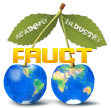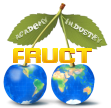You are here
Tourist Attraction Information Service
Recently, the tourist business has become more and more popular. Every country has a huge amount of places of interest sometimes located far away from one another. Tourists have a limited amount of time and usually would like to attend as many interesting places as possible. A tourist could be suggested by the service a museum (or another places of interests), which is currently better to attend, based on his/her preferences and the current situation in the region. The tourist’s preferences can be explicit (set manually) or tacit (discovered by the service based on the previous interactions with the tourist). The current situation in the regions includes closed places of interests, weather situation (e.g., restriction for using ferries or helicopters), accessible drivers around the tourist who can drive him/her to places of interest, etc. Information about places of interests acquiring from different sources (like Wikipedia, Wikivoyage, Flickr, Panoramio and etc.).
Development of new technologies brings people new possibilities such as smart spaces. Smart spaces can provide better user experience by allowing a user to connect new devices flexibly and to access all the information in the multi device system from any of the devices. Tourist Attraction Information Service is based on Smart-M3 information platform that implements concept of Smart-Spaces.
User interface of the service implementing based on Android OS for mobile devices. Recommendation module implementing using python language. Communications with client modules implementing based on Smart-M3 information platform.
Contact person: Alexey Kashevnik , PhD, project leader, SPIIRAS
Developers:
Maxim Schekotov, PhD Student, Andrey Ponomarev, PhD
May 2012 – December 2012 - Initial plan. State-of-the-art. Requirements specification.
Janurary 2013 – May 2013 - Development user interface. Implementation Smart-M3 modules.
May 2013 – October 2013 - Development interface connections to information sources.
November 2013 – March 2014 - Development recommendation logic and scenarios.
March 2014 – October 2014 – Testing, evaluation results increasing responce speed and user interfaces.






















